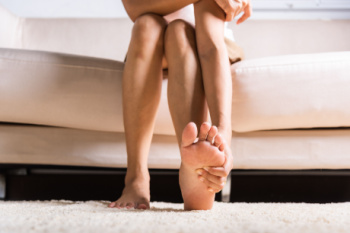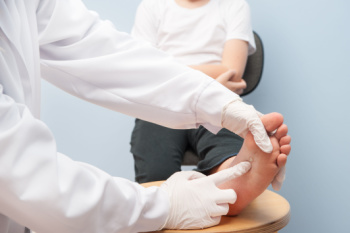Items filtered by date: June 2024
Preventing Falls Outside the Home

Even if you have meticulously prepared your home, stepping outside presents a new set of challenges that can lead to dangerous falls. Falls outside the home are a significant risk to the elderly population, causing fractures, injuries, hospitalization, and even fatalities. While in stores, where smooth, slippery floors are common, wear shoes with non-slip treads and use supportive aids, like shopping carts or walkers for added stability. In crowded venues like airports, malls, or concerts, hold onto a partner or use an assistive device to maintain your balance. Wear proper footwear with deep treads when walking in parks, playgrounds, and taking public staircases. Always use handrails, move slowly, and increase visibility at night with a flashlight, if necessary. Be extra careful in public bathrooms, which are notorious for wet and slippery floors but may not provide grab bars. Wet areas around swimming pools and public showers are other slipping hazards. Additionally, even walking through sand at the beach can cause a loss of balance. Certain strength and balance exercises can be prescribed by a chiropodist to help prevent falls. If you have fallen recently and need help, it is suggested that you schedule an appointment with this type of healthcare professional.
Falls are a common but preventable problem for older adults. If you would like to learn more about preventing falls, please consult with one of the chiropodists from Complete Family Footcare & Therapy. Our clinicians can help you maintain the health of your lower limbs and your mobility.
Did you know that most falls occur in the home? Fortunately, there are many simple changes that you can make to the living environment to reduce the risk of falling.
In the Bathroom:
Install grab bars near toilets, bathtubs, and showers
Put non-skid mats on all surfaces that may get wet
In the Bedroom:
Keep a light near the bed so that you can easily turn it on if you have to get up at night
Keep the path from your bedroom to the bathroom clutter-free and well-lit
Consider installing a bed rail for added support
In the Kitchen:
Use non-skid mats
Wipe up any spills immediately
Move commonly used items to areas that are easily within your reach
In the Hallways:
Place handrails on both sides of the stairs
Install good lighting in the hallways and around the entire home
Keep hallways free of clutter
Don’t use throw rugs or small area rugs
In Other Living Areas:
Keep loose cables, cords, and wires near the wall and away from walking surfaces
Make sure that all carpets and rugs are secure firmly to the floor
Arrange your furniture so that it is not in your way when you walk
Use chairs and couches that you can easily get up from
If you have any questions, please feel free to contact our offices located in . We offer the newest diagnostic and treatment technologies for all your foot care needs.
Decoding Foot Pain

Foot pain can stem from various sources, including injuries, overuse, or underlying medical conditions like arthritis or diabetes. It affects people of all ages and activity levels, from athletes to office workers, and can manifest as sharp or dull pain, stiffness, swelling, or tingling sensations. Identifying the root cause is necessary for effective management. Common remedies include rest, compression, and elevation, in addition to wearing supportive footwear. In some cases, custom orthotics may be recommended to address biomechanical issues contributing to foot pain. If you have persistent or severe foot pain, it is suggested that you schedule an appointment with a chiropodist for professional evaluation, diagnosis, and a tailored treatment plan.
Foot pain can have many causes. To receive an accurate diagnosis and treatment for your foot pain, please consult with one of the chiropodists from Complete Family Footcare & Therapy. Our clinicians will assess your condition and provide you with quality foot and ankle treatment.
Causes
There are a variety of different conditions that can cause foot pain, including:
Plantar fasciitis
Deformities, such as bunions or hammertoes
Injuries to the muscles, bones, tendons, or ligaments in the feet
Arthritis
Flat feet
Ingrown toenails
Symptoms
The type and location of your foot pain can help determine what may be causing it and what type of treatment options are best for you.
Common types of foot pain include:
Heel pain
Arch pain
Toe pain
Ball of foot pain
Pain that has a stabbing, burning, or tingling quality
Pain that is constant, intermittent, or that gets better or worse depending on the situation
Diagnosis
A thorough medical history and physical examination of your feet will be required to determine a diagnosis. Imaging studies, such as X-rays or MRIs may be performed to rule out or confirm certain diagnoses.
Treatment
Treatment will depend on the cause of the pain. Common treatments for foot pain include resting, icing, compressing, and elevating the affected foot, wearing orthotics, or taking anti-inflammatory medications.
If you have any questions, please feel free to contact our offices located in . We offer the newest diagnostic and treatment technologies for all your foot care needs.
Plantar Warts and Children

Plantar warts are growths on the bottom of the foot that make walking uncomfortable. Children are more likely to develop plantar warts than adults, because adults develop more resistance to the virus over time. Care from a chiropodist is important in managing this infection, because it can alter the continued development of your child’s foot and how they walk. Plantar warts, caused by the human papillomavirus, or HPV, are thickened skin on the bottom of the foot, with tiny black dots or white lesions. They thrive in warm, moist environments like locker room floors and swimming pool areas. Direct contact is all it takes, particularly if there is a break in the skin. Treatments for plantar warts vary, from salicylic acid applications to cryotherapy sessions. Salicylic acid, available in various forms, can gradually burn off the wart, while cryotherapy freezes it away. For stubborn plantar warts, a combination of treatments might be necessary, especially if they have returned after previous attempts. If a plantar wart is spreading or causing pain, it is suggested that you schedule an appointment with a chiropodist who can examine it and recommend the most effective treatment plan.
Plantar warts can be uncomfortable or even painful. If you’re suffering from warts on your feet, please consult with one of the chiropodists from Complete Family Footcare & Therapy. Our clinicians can help you maintain the health of your lower limbs and your mobility.
What Does a Plantar Wart Look Like?
Plantar warts are fleshy growths that generally have a rough, grainy texture. They may look and feel like a callus and are usually small and can grow individually or in clusters. Plantar warts may have small, black dots at their center that are actually tiny blood vessels. Warts interrupt the natural lines of your skin.
Treatment Options
Salicylic acid - A chemical solution applied directly to the wart
Cryotherapy - Freezing the wart off with liquid nitrogen
Minor surgery - Removing the wart through excision
Laser treatment - A concentrated beam of light is used to remove the wart
Wearing comfortable shoes and socks to avoid irritating the wart
Over-the-counter medications for pain relief
Patches to keep pressure off the warts
Plantar warts can go away on their own, but this may take several months to years. If your plantar warts are bothering you, seeking medical treatment is suggested. If you have any questions, please feel free to contact our offices located in . We offer the newest diagnostic and treatment technologies for all your foot care needs.
Facts About Ingrown Toenails

An ingrown toenail occurs when the edge of the toenail grows into the surrounding skin instead of over it. This often results in pain, swelling, and redness in the affected toe. Several factors contribute to the development of ingrown toenails. Improper toenail trimming, wearing tight-fitting shoes, or sustaining foot injuries can increase the likelihood of experiencing this condition. Additionally, individuals with curved or unusually shaped toenails may be more prone to ingrown toenails. Symptoms of an ingrown toenail typically include tenderness along the side of the toenail, swelling, and redness. In some cases, the affected area may become infected, leading to drainage of pus or an unpleasant odor. Proper foot care and wearing comfortable, properly fitting footwear can help prevent ingrown toenails. Having an ingrown toenail can be painful and uncomfortable. If you have developed this condition, it is suggested that you visit a chiropodist who can offer you effective relief and treatment methods.
Ingrown toenails may require medical attention. If you have significant pain or notice signs of infection from an ingrown toenail, please consult with one of the chiropodists from Complete Family Footcare & Therapy. Our clinicians will assess your condition and provide you with quality foot and ankle treatment.
What Is an Ingrown Toenail?
An ingrown toenail occurs when the edges of a toenail grow into the surrounding skin. The toenails of the big toe are usually affected, however, an ingrown toenail can happen on any toe. Sometimes, the area can become infected leading to potentially serious complications. The ingrown toenail may be caused by improper trimming of the toenail, wearing ill-fitting shoes, or injury to the nail.
Symptoms
The symptoms of an ingrown toenail include:
Pain
Swelling
Redness
Warmth
Pus or drainage from the affected nail or a fever may indicate an infection of the area.
Treatment
Treatment depends on the severity of the ingrown toenail. In less severe cases, home treatment may be adequate. Soaking the affected foot in warm water and gently lifting the nail from the skin with a piece of clean cotton can help. In more severe cases, you may need to use topical or oral antibiotics to treat an infection. Surgical removal of the ingrown toenail may be required if more conservative treatments fail.
Ingrown toenails may be prevented by wearing well-fitted shoes and properly trimming the toenails. Toenails should be trimmed straight across and not too short when using nail clippers.
If you have any questions, please feel free to contact our offices located in . We offer the newest diagnostic and treatment technologies for all your foot care needs.

